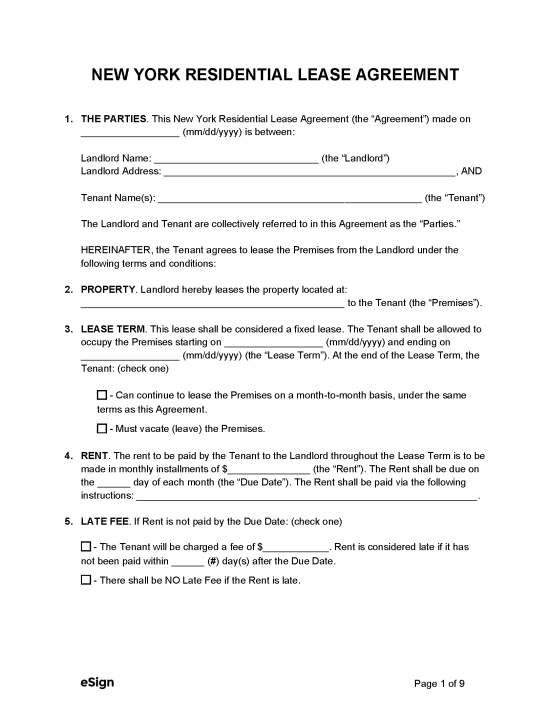Lease Agreements: By Type (6)
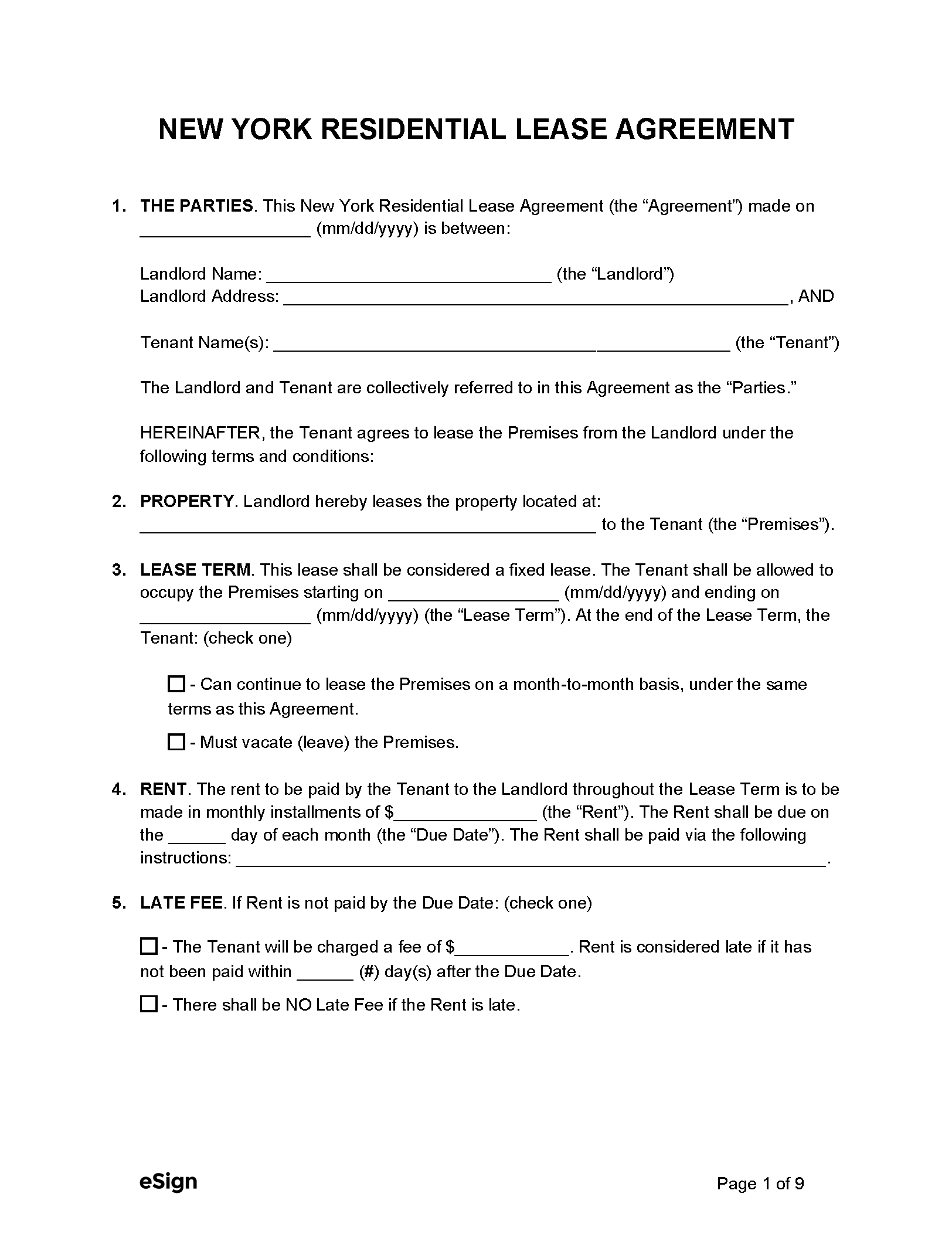 Standard (1-Year) Lease Agreement – Most rental arrangements use this contract. It has a one-year term and is paid monthly, usually on the first of the month. Standard (1-Year) Lease Agreement – Most rental arrangements use this contract. It has a one-year term and is paid monthly, usually on the first of the month.
Download: PDF |
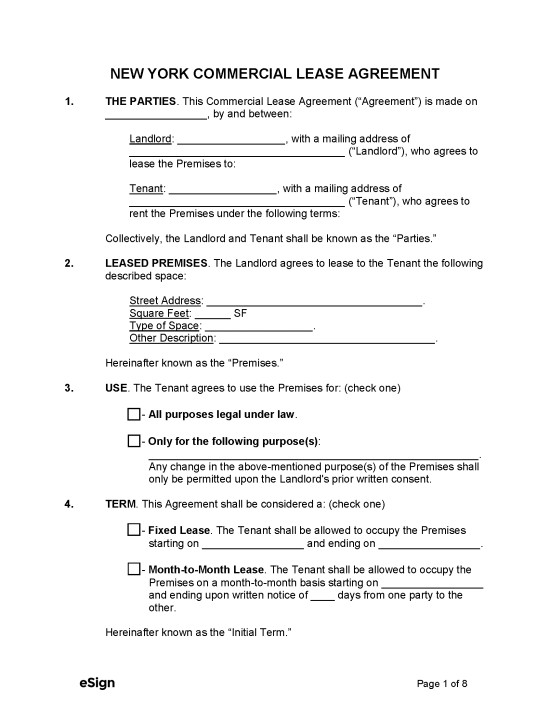 Commercial Lease Agreement – Allows an individual or company to run their business out of the rental property. Commercial Lease Agreement – Allows an individual or company to run their business out of the rental property.
Download: PDF, Word (.docx), OpenDocument |
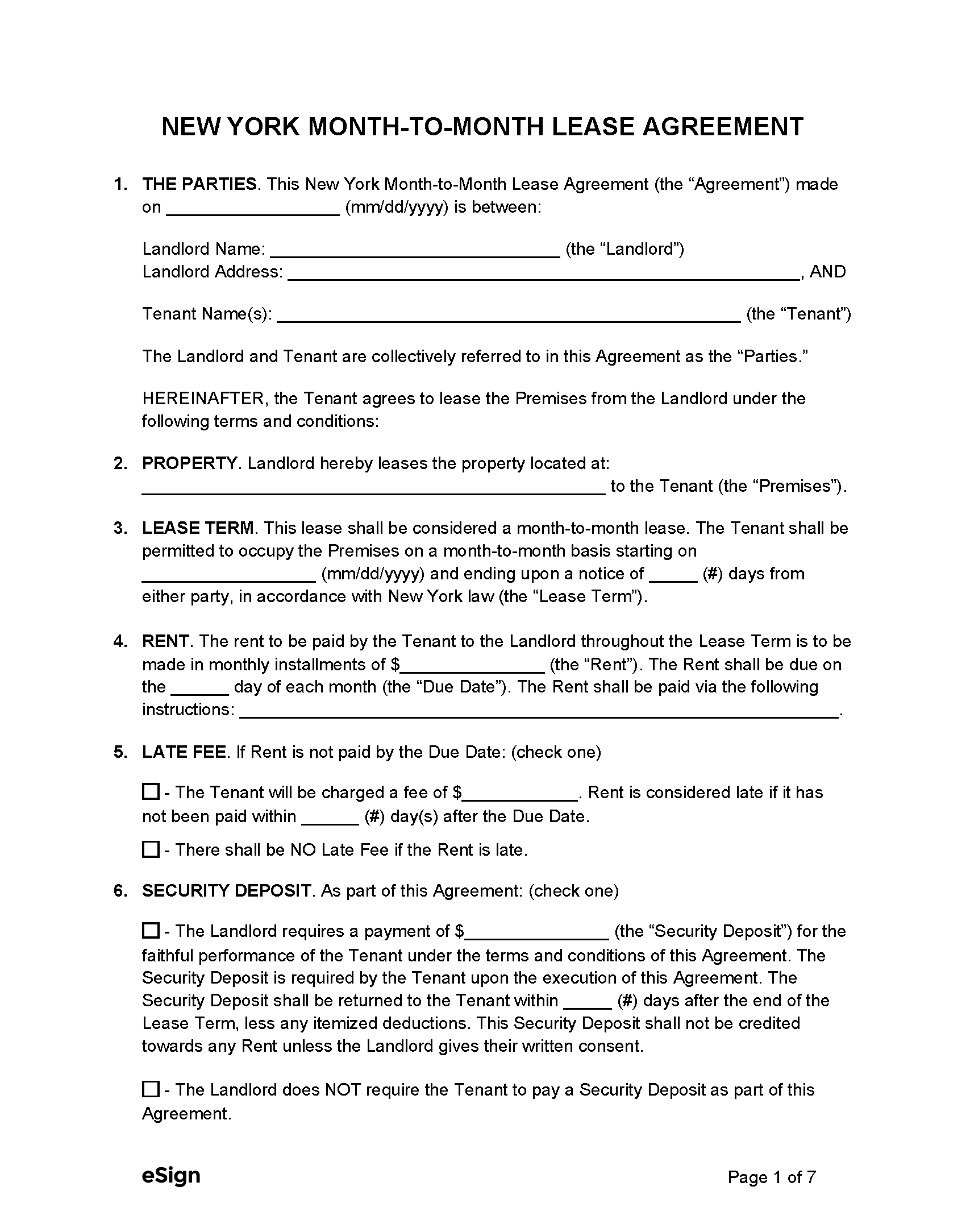 Month-to-Month Lease Agreement – A rental agreement that renews with each monthly payment. Month-to-Month Lease Agreement – A rental agreement that renews with each monthly payment.
Download: PDF, Word (.docx), OpenDocument |
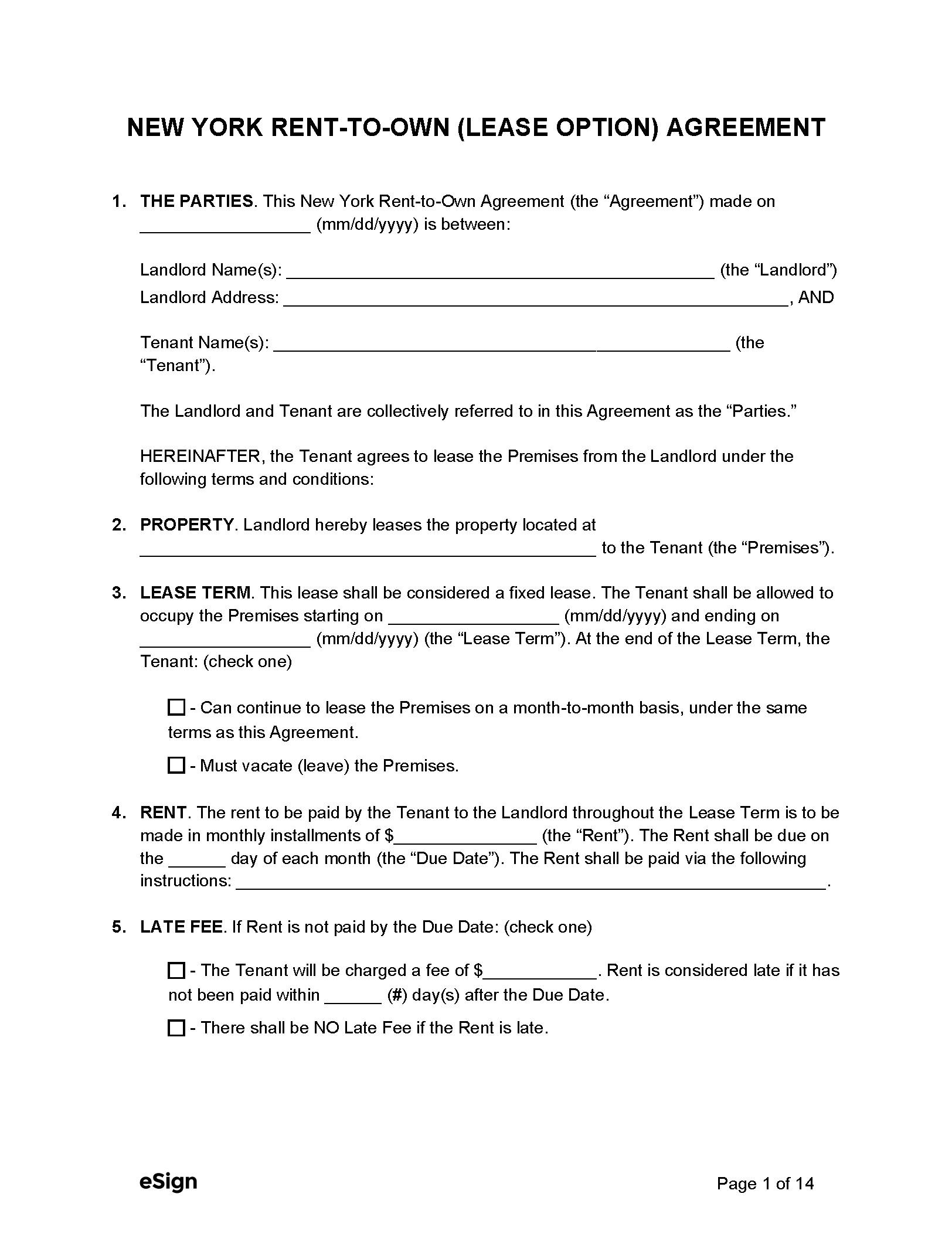 Rent-to-Own Agreement (Lease Option) – This rental agreement allows the tenant to purchase the rental property in accordance with the contract’s terms. Rent-to-Own Agreement (Lease Option) – This rental agreement allows the tenant to purchase the rental property in accordance with the contract’s terms.
Download: PDF |
 Roommate Agreement – Roommates can use this form to make an agreement regarding payments, duties, and rules in their shared residential space. Roommate Agreement – Roommates can use this form to make an agreement regarding payments, duties, and rules in their shared residential space.
Download: PDF, Word (.docx), OpenDocument |
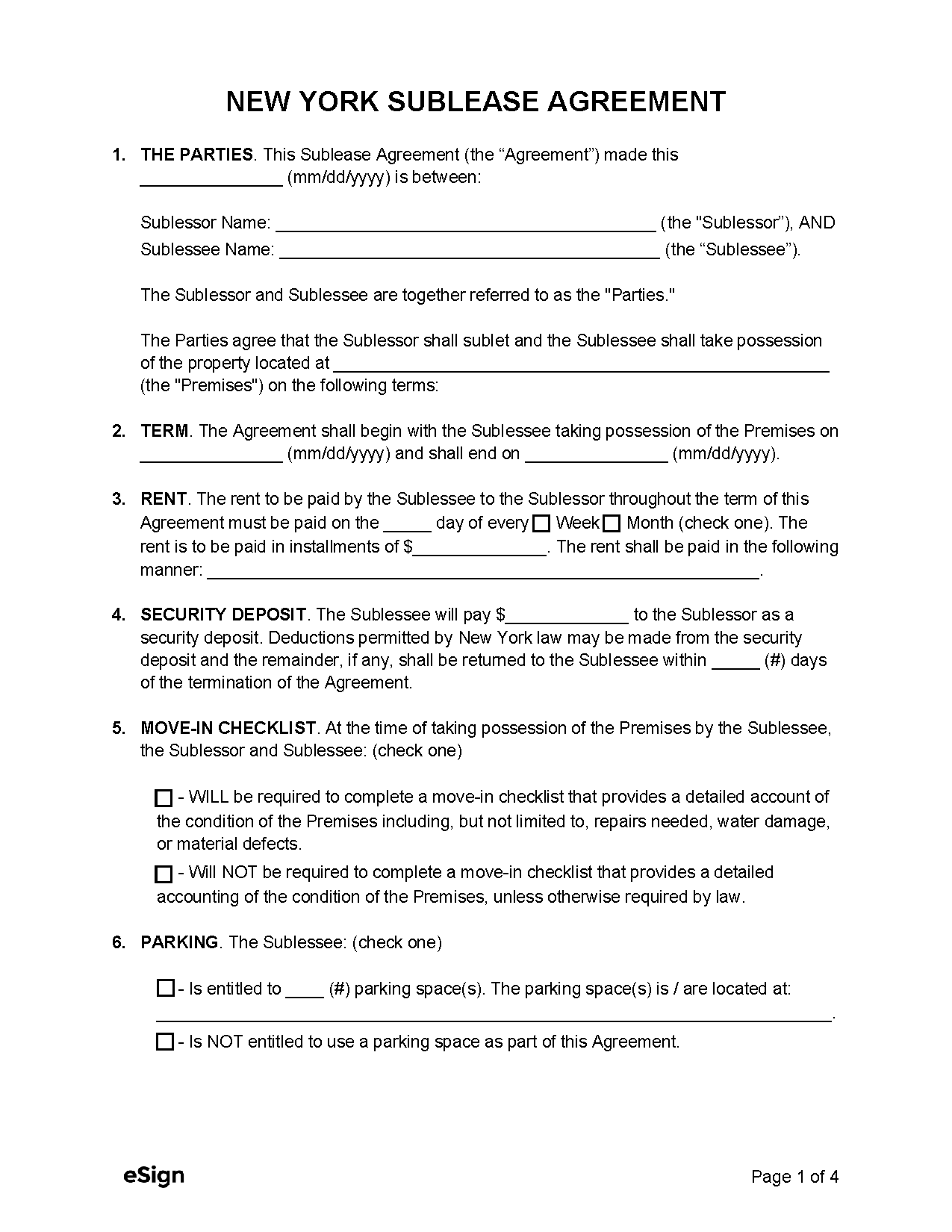 Sublease Agreement – If a tenant wishes to rent out a part or all of their rental space to another individual, they should use this contract. Sublease Agreement – If a tenant wishes to rent out a part or all of their rental space to another individual, they should use this contract.
Download: PDF, Word (.docx), OpenDocument |
Required Disclosures (10)
- Allergen Hazards Disclosure (NYC Only) (PDF) – Landlords of properties with multiple dwellings must disclose the fact that they are required by law to inspect the premises annually for indoor allergen hazards.[1]
- Bedbug Infestation Disclosure (NYC Only) (PDF) – Landlords must disclose the historical presence of bedbugs to tenants in rental properties located in New York City.[2]
- Building Smoking Policy Disclosure (NYC Only) (PDF) – The owner’s smoking policy must be included if the residential property contains three or more units.[3]
- Certificate of Occupancy – Landlords of buildings that have three or fewer units need to include a disclosure to the tenant indicating whether the certificate of occupancy for the building is valid.[4]
- Flood Disclosure (PDF) – Every rental agreement must include a flood insurance notice, disclose whether the property is in a FEMA-designated floodplain and whether there is prior damage from natural flooding.[5]
- Lead-Based Paint Disclosure (PDF) – Discloses the existence of lead paint on the premises (required if the property was constructed before 1978).[6]
- Security Deposit Receipt (PDF) – If the landlord receives a security deposit, they must give the tenant a receipt that lists the bank name and location where the deposit is held.[7]
- Sprinkler System Disclosure (PDF) – Residential leases must contain a disclosure stating whether there is an operative sprinkler system on the premises.[8]
- Stove Knob Covers Disclosure (NYC Only) (PDF) – Discloses the landlord’s obligation to install knob covers on gas-powered stoves in rental units that house a child under the age of six.[9]
- Window Guard Disclosure (NYC Only) (PDF) – Landlords are required to install window guards if a child under the age of 11 lives in the rental unit.[10]
Security Deposits
Maximum Amount ($) – The maximum amount that a landlord may demand for a security deposit is one month’s rent.[11]
Collecting Interest – If the rental property has at least six residential units, security deposits must be placed in an interest-bearing account. Landlords are entitled to keep 1% of the interest earned; the tenant is entitled to the remainder.[12]
Returning to Tenant – Deposits must be returned to tenants within 14 days of the tenant’s vacancy.[13]
Itemized List Required? – Yes, the tenant must be given a statement indicating any deductions from the security deposit within 14 days of the termination of the lease.[14]
Separate Bank Account? – Yes, landlords must keep deposits separate from their personal bank accounts.[15]
Landlords Entry
General Access – No state law specifies how much warning a landlord must provide before accessing the rented property, but a notice to enter may be used as a courtesy to tenants.
- New York City Only: Tenants must be given at least 24 hours’ notice if the landlord wants to inspect the premises to ensure it’s up to code.[16] Landlords who wish to make repairs or improvements must give the tenant at least one week’s notice.[17]
Immediate Access – No state law addresses emergency entry into a rental unit.
- New York City Only: Landlords may enter a rental unit in emergency situations without notice or consent.[18]
Rent Payments
Grace Period – Tenants have five days (including the initial due date) to pay rent before the landlord can charge late fees.[19]
Maximum Late Fee ($) – The most that may be charged for late rent is $50 or 5% of the monthly rent, whichever is less.[20]
Bad Check (NSF) Fee – The fee for a bounced check may not exceed $20.[21]
Withholding Rent – Tenants can pay the utility provider and subtract the amount spent from future rent payments if a landlord refuses or does not provide a utility or other maintenance service for which they are responsible.[22]
Breaking a Lease
Non-Payment of Rent – A 14-day notice to quit may be sent if a tenant is behind on rent.[23]
Non-Compliance – If a tenant violates the conditions of their lease, the landlord may send them a 30-day notice to quit.[24]
Lockouts – It is illegal for a landlord to change the locks in an attempt to evict a tenant without a court order.[25]
Leaving Before the End Date – If the tenant leaves before the lease expires, they must pay rent until the agreement expires or the landlord finds a new tenant. Landlords must make a reasonable effort to rent the property at market value to a new tenant.[26]
Lease Termination
Month-to-Month Tenancy – Landlords may use a 1-month notice to quit to inform tenants they have one month to move out.[27]
Unclaimed Property – No state law governs how a landlord must deal with a tenant’s abandoned personal property.
Sources
- NYC Admin. Code § 27-2017.2(c)
- NYC Admin. Code § 27–2018.1
- NYC Admin. Code § 17-506.1(b)
- RPP § 235-bb
- RPP § 231-b
- EPA/HUD Fact Sheet
- GOB § 7-103(2)
- RPP § 231-A
- NYC Admin. Code § 27-2046.4(b)
- NYC Admin. Code § 27–2043.1
- GOB Code § 7-108-1-a(a)
- GOB § 7-103(2-a)
- GOB § 7-108(e)
- GOB § 7-108(e)
- GOB § 7-103(1)
- NYC Admin. Code § 25-101(a)(1)
- NYC Admin. Code § 25-101(a)(2)
- NYC Admin. Code § 25-101(a)(3)
- RPP § 238-A(2)
- RPP § 238-A(2)
- GOB § 5-328(2)(a)
- RPP § 235-A(1)
- RPA § 711.2(2)
- RPA § 753(4)
- RPA § 768(iii)
- RPP § 227-e
- § 232-A, § 232-B
